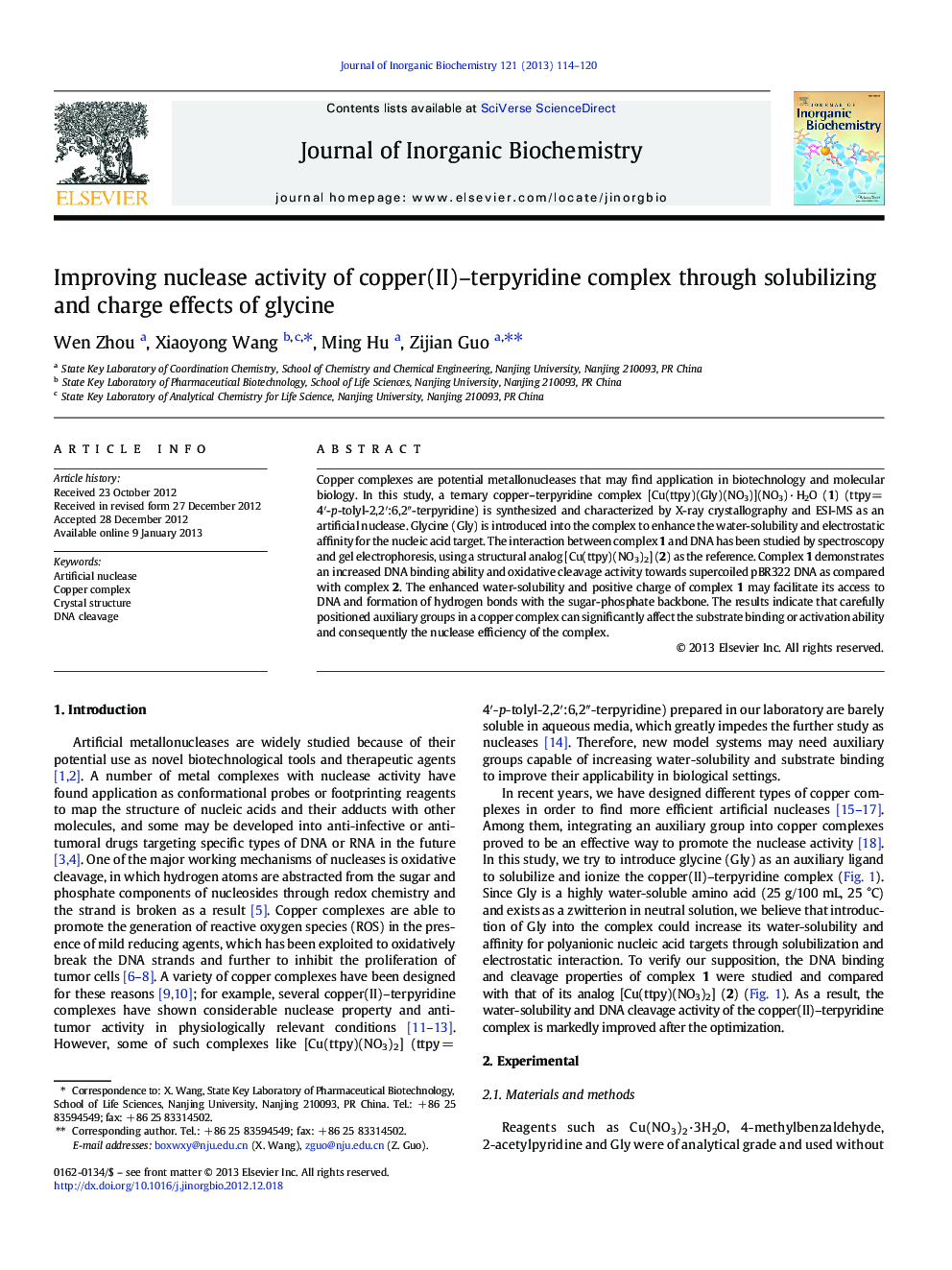| کد مقاله | کد نشریه | سال انتشار | مقاله انگلیسی | نسخه تمام متن |
|---|---|---|---|---|
| 1316050 | 1499466 | 2013 | 7 صفحه PDF | دانلود رایگان |

Copper complexes are potential metallonucleases that may find application in biotechnology and molecular biology. In this study, a ternary copper–terpyridine complex [Cu(ttpy)(Gly)(NO3)](NO3) · H2O (1) (ttpy = 4′-p-tolyl-2,2′:6,2″-terpyridine) is synthesized and characterized by X-ray crystallography and ESI-MS as an artificial nuclease. Glycine (Gly) is introduced into the complex to enhance the water-solubility and electrostatic affinity for the nucleic acid target. The interaction between complex 1 and DNA has been studied by spectroscopy and gel electrophoresis, using a structural analog [Cu(ttpy)(NO3)2] (2) as the reference. Complex 1 demonstrates an increased DNA binding ability and oxidative cleavage activity towards supercoiled pBR322 DNA as compared with complex 2. The enhanced water-solubility and positive charge of complex 1 may facilitate its access to DNA and formation of hydrogen bonds with the sugar-phosphate backbone. The results indicate that carefully positioned auxiliary groups in a copper complex can significantly affect the substrate binding or activation ability and consequently the nuclease efficiency of the complex.
A ternary copper–terpyridine complex with auxiliary glycine ligand demonstrates enhanced DNA binding and cleavage properties due to the increased water-solubility and electrostatic interaction.Figure optionsDownload as PowerPoint slideHighlights
► Cu-terpyridine-Gly ternary complex was prepared as an artificial nuclease.
► Gly increased the water-solubility and electrostatic affinity of the complex for DNA.
► Cu-terpyridine-Gly complex showed enhanced abilities in DNA binding and cleavage.
Journal: Journal of Inorganic Biochemistry - Volume 121, April 2013, Pages 114–120